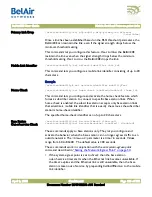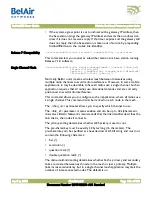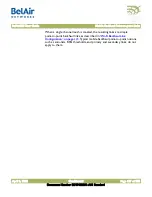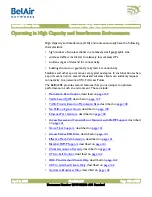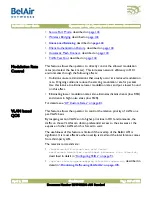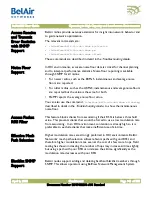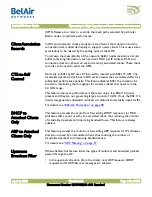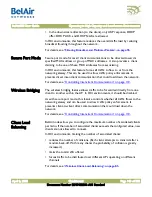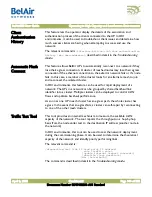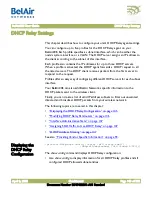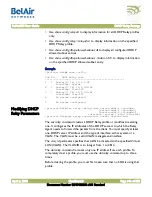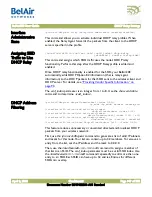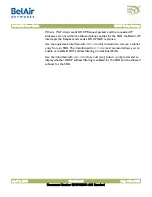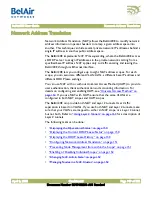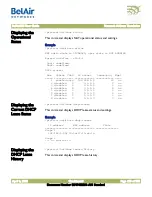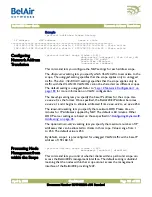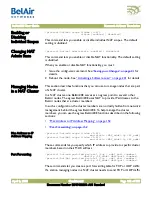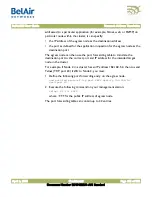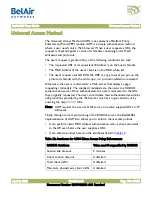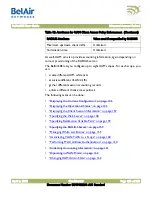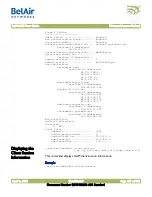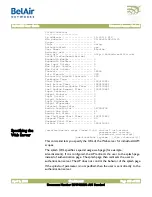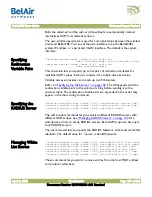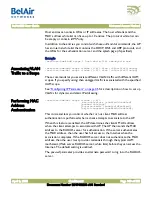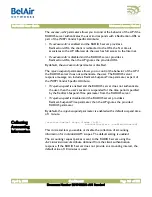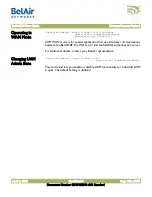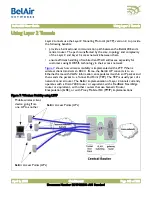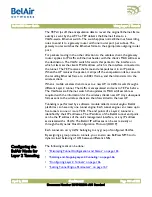
BelAir20E User Guide
Network Address Translation
April 2, 2012
Confidential
Document Number BDTM02201-A01 Standard
Network Address Translation
Network Address Translation (NAT) allows the BelAir20E to modify network
address information in packet headers to remap a given address space into
another. This technique can hide several private network IP addresses behind a
single IP address in another public address space.
The BelAir20E implements NAT IP masquerading, where the BelAir20E acts as
a DHCP server to assign IP addresses in the private network starting from a
specified base IP address. NAT applies only to traffic entering and leaving the
BelAir20E through its Ethernet interface.
The BelAir20E lets you configure up to eight NAT address scopes. For each
scope, you can associate different VLAN traffic, a different base IP address and
different DHCP lease settings.
You can use NAT with or without Universal Access Method (UAM) to provide
user authentication, client authentication and accounting information. For
details on configuring and enabling UAM, see
. If you use NAT with UAM, ensure that the same VLANs are
configured in both NAT scopes and UAM scopes.
The BelAir20E can provide both NAT and Layer 2 tunnels. User traffic
separation is based on VLANs. If you use both NAT and Layer 2 tunnels, make
sure that your VLANs are mapped to either an NAT scope or a Layer 2 tunnel,
but not both. Refer to
“Using Layer 2 Tunnels” on page 163
for a description of
Layer 2 tunnels.
The following tasks can be done:
•
“Displaying the Operational Status” on page 150
•
“Displaying the Current DHCP Lease Status” on page 150
•
“Displaying the DHCP Lease History” on page 150
•
“Configuring Network Address Translation” on page 151
•
“Preventing Node Management from within the Scope” on page 151
•
“Enabling or Disabling Individual Scopes” on page 152
•
“Changing NAT Admin State” on page 152
•

